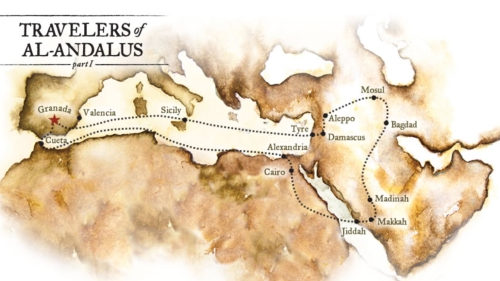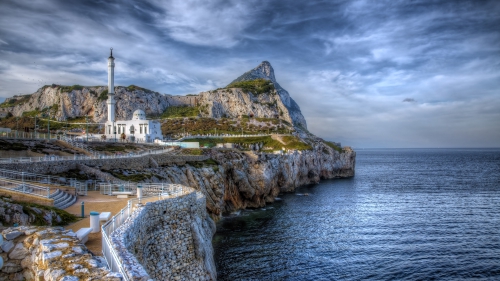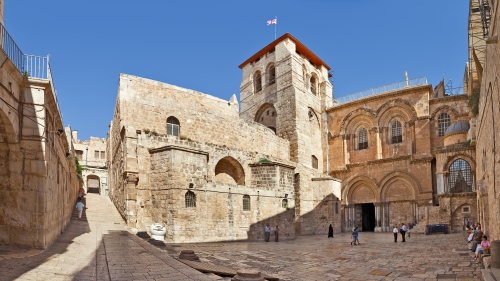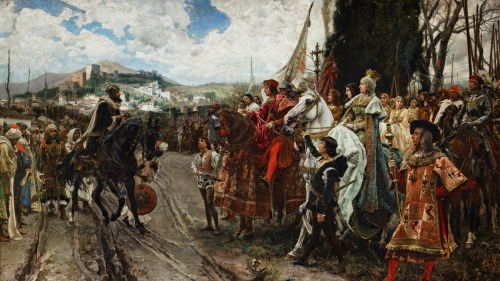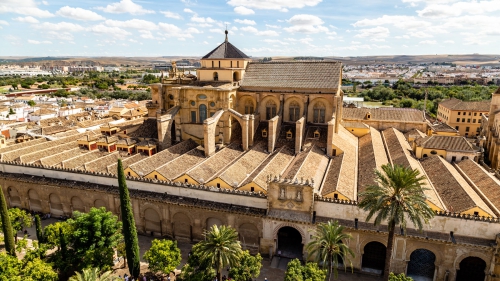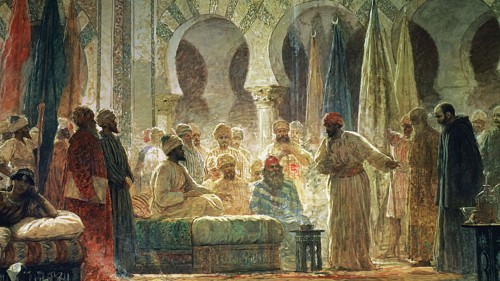The Rise and Fall of Islamic Spain - PBS Documentary
PBS documentary: http://www.pbs.org/programs/citiesofl...
Cities of Light was produced by Unity Production Foundation and Gardner Films. For more information please visit http://www.islamicspain.tv
Copyright: PBS
From the days of Charlemagne to Christopher Columbus, Islamic Spain represents one of the most productive intercultural relationships in Western history down to the present day. The lemon tree, the water wheel, the astrolabe and Aristotle's lost philosophy all arrived in Europe through Islamic Spain. Churches and temples that strongly resemble Muslim mosques, the pinnacle of Hebrew literature's Golden Age, the roots of modern medicine and mathematics, and the transmission of Greek philosophy into Western Europe are just a few of the collaborative achievements that form the legacy of Christian, Jewish, and Muslim cultures interacting on the Iberian Peninsula over seven centuries.
Cities of Light: The Rise & Fall of Islamic Spain, a two-hour documentary film, journeys into one of World History's most fascinating and important periods. With a fresh focus on the many contributions to Western civilization made by Islamic institutions and culture, the film also consistently cleaves to an even-handed presentation of the triumphs and shortcomings, achievements and failures of a centuries-long period when Muslims, Christians, and Jews inhabited the same corner of Western Europe and there built a lasting society that was both part of Christian Europe and the Muslim Middle East.
Cities of Light vividly demonstrates how these very different groups found the means to co-exist and thrive together—and yet how fragile that symbiosis could be. The pluralistic centuries of Medieval Spain ended in the Spanish Inquisition and the formation of an exclusively Catholic Spain.
The legacy of Muslim Spain is rooted in the two hundred fifty year reign of the Umayyad dynasty. This first, long interaction between the Arab Middle East and European Spain laid the basis for a legacy of pluralism—the Spanish term is convivencia. Nowhere in Medieval Europe was central government more lasting, more extensive, or more successful than in Cordoba, Spain's capital under the Muslims. By the tenth century it was Europe's largest, richest, and cleanest city, with running water, public hospitals, and lighted streets—(hence the film's title). The film lingers on the creation and expansion of this stunning capital, where religious and civil institutions were joined in a single governing center with a national tax base.
The opening hour of Cities of Light demonstrates how a culture of pluralism helped fuel an institutionalized love and respect for learning in all its forms, from science and mathematics to philosophy and poetry. The program and its extensive website help viewers trace the development of a new Mediterranean culture deeply influenced by Muslim scholarship and art.
Unlike the Romans and Visigoths before them, Muslim rulers seemed to grasp that the Jews and Christians who preceded them to the Iberian Peninsula were necessary partners in a productive society. The fascinating story of a central bureaucracy staffed by elites from all three faiths, with Jews in all but the highest post and Christian scholars outperforming "native" Arabic speakers in their own language and culture, is a fascinating and powerful antidote to our modern stereotypes concerning Christians, Jews, and Muslims.
Had the story of Islamic Spain stopped here, at the apex of Cordoban central rule, it would be a utopian history unmatched by human beings of any time anywhere. Instead, forces of division, corruption, entropy, and prejudice enter the story. The lack of a clear line of succession, the rise of Crusading and Jihadist cultures, and the advent of foreign armies conspired to bring Cordoba tumbling down in the early eleventh century. Even then, out of its ashes, there gradually arose nearly two dozen vibrant city states scattered around the peninsula, each one vying with the others to be the most powerful, the most cultured.
The second hour of Cities of Light deals with the long, drawn-out fall of the old order, the gradual decline of Muslim power, and the rise of a Roman Catholic Spanish monarchy as the powerful kingdoms of and Castile, Lyon and Aragon combined to form a new national identity. Here we watch the spirit of co-existence finally disappear as Jews and then Muslims, by stages, are forced to convert or go into exile.
Perhaps no other period of European history sheds so much light on our current encounter with extremism. In the story of Islamic Spain, we see what heights may be achieved when adherents to each of these three faiths join together to forge a common culture and, by contrast, how absolutists and narrow minded ideologues with their crusades and jihads may divide and bring down a creative, pluralist society forever.









